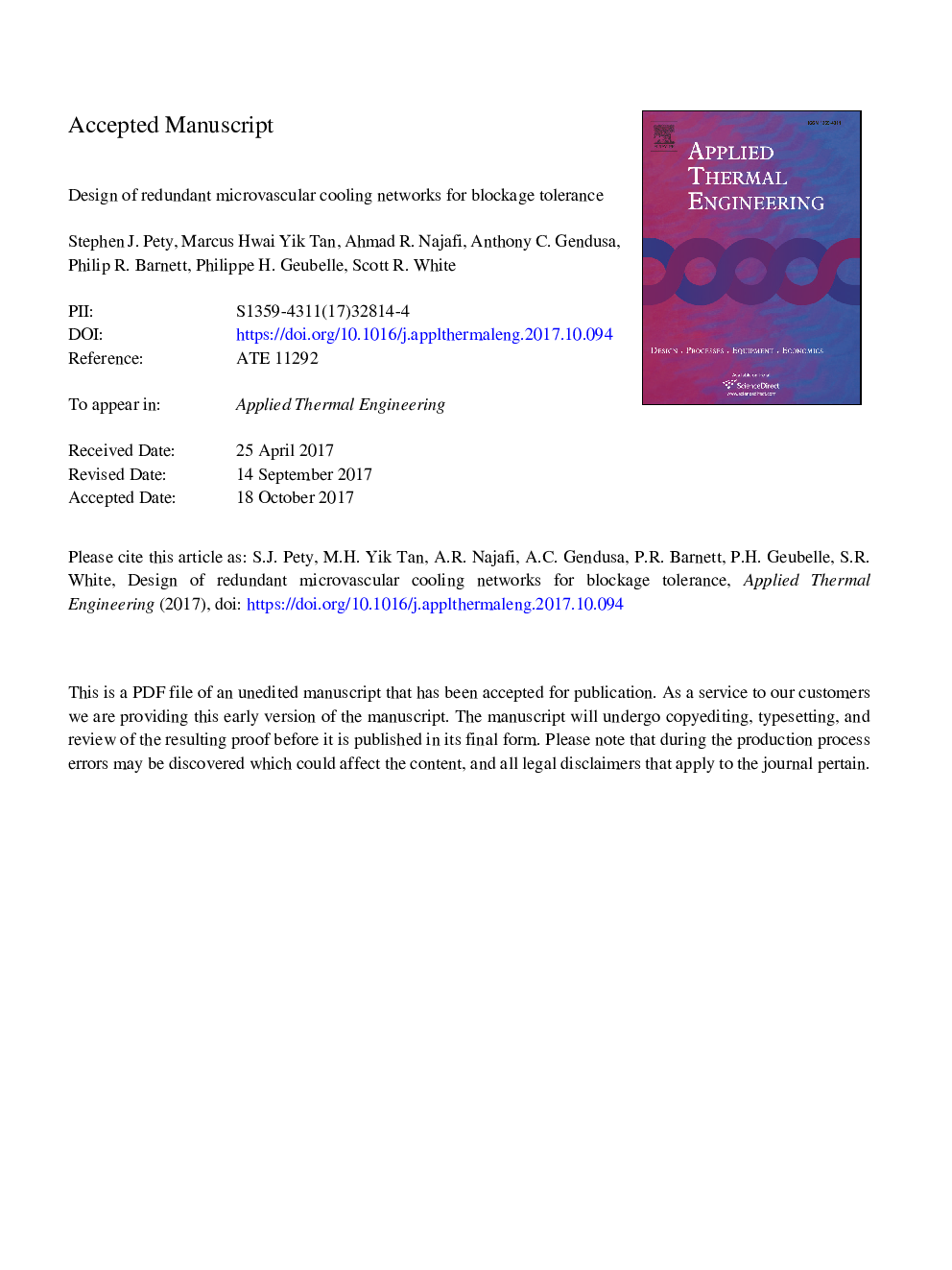| Article ID | Journal | Published Year | Pages | File Type |
|---|---|---|---|---|
| 7046298 | Applied Thermal Engineering | 2018 | 31 Pages |
Abstract
Microvascular networks can provide host materials with many functions including self-healing and active cooling. However, vascular networks are susceptible to blockage which can dramatically reduce their functional performance. A novel optimization scheme is presented to design networks that provide sufficient cooling capacity even when partially blocked. Microvascular polydimethylsiloxane (PDMS) panels subject to a 2000â¯Wâ¯mâ2 applied heat flux and 28.2â¯mLâ¯minâ1 coolant flow rate are simulated using dimensionally reduced thermal and hydraulic models and an interface-enriched generalized finite element method (IGFEM). Channel networks are optimized to minimize panel temperature while the channels are either clear (the O0 scheme), subject to the single worst-case blockage (O1), or subject to two worst-case blockages (O2). Designs are optimized with nodal degree (a measure of redundancy) ranging from 2 to 6. The results show that blockage tolerance is greatly enhanced for panels optimized while considering blockages and for panels with higher nodal degree. For example, the 6-degree O1 design only has a temperature rise of 7â¯Â°C when a single channel is blocked, compared to a 35â¯Â°C rise for the 2-degree O0 design. Thermography experiments on PDMS panels validate the IGFEM solver and the blockage tolerance of optimized panels.
Related Topics
Physical Sciences and Engineering
Chemical Engineering
Fluid Flow and Transfer Processes
Authors
Stephen J. Pety, Marcus Hwai Yik Tan, Ahmad R. Najafi, Anthony C. Gendusa, Philip R. Barnett, Philippe H. Geubelle, Scott R. White,
